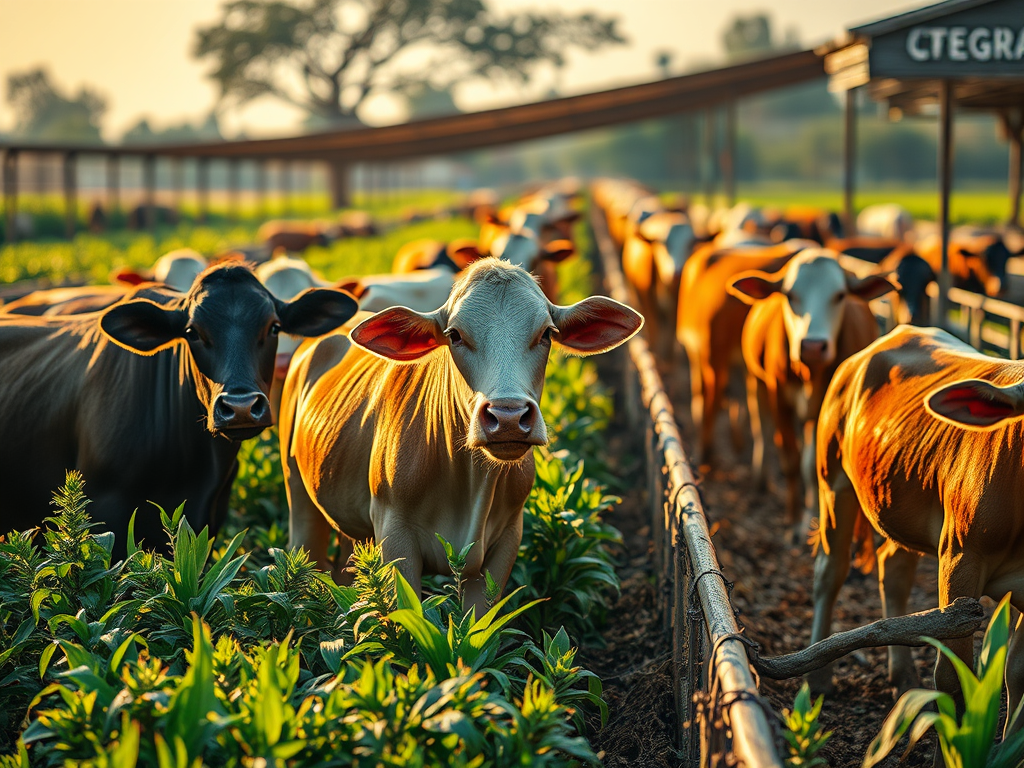Livestock farming is the backbone of Africa’s agricultural economy, providing livelihoods for millions and contributing significantly to food security. However, the sector faces a critical challenge: how to meet the growing demand for animal products while minimizing its environmental impact. Unsustainable practices like deforestation, overgrazing, and poor waste management degrade ecosystems and threaten the long-term viability of livestock farming. The solution lies in sustainable livestock farming—a holistic approach that balances productivity with environmental conservation. This article delves into practical strategies, real-world examples, and actionable insights to help African farmers achieve this balance.
The Challenge: Livestock Farming and Environmental Degradation
While livestock farming drives economic growth and food security, it also contributes to environmental degradation in several ways:
- Deforestation: Countries like Nigeria and Ethiopia clear vast tracts of forest for grazing and feed production, reducing biodiversity and exacerbating climate change. Nigeria loses over 400,000 hectares of forest annually due in part to livestock expansion.
- Overgrazing: In arid and semi-arid regions like Kenya’s Rift Valley, overgrazing leads to soil erosion and desertification, reducing land productivity and threatening pastoral livelihoods.
- Greenhouse Gas Emissions: Livestock, especially cattle, produce methane, a greenhouse gas 25 times more potent than carbon dioxide. The FAO estimates that livestock farming accounts for about 14.5% of global greenhouse gas emissions.
- Water Pollution: Poorly managed animal waste contaminates water sources, harming aquatic ecosystems and endangering human health.
These challenges highlight the urgent need for sustainable livestock farming practices that protect the environment while ensuring food security and economic growth.
Sustainable Livestock Farming Practices: A Path Forward
Sustainable livestock farming involves adopting environmentally friendly methods without compromising productivity. Key strategies include:
1. Rotational Grazing
- This practice divides pastureland into smaller paddocks, rotating livestock to prevent overgrazing, reduce soil erosion, and improve soil fertility.
- Example: In Kenya’s Maasai Mara, pastoralists using rotational grazing have restored degraded land, increased grass cover, and enhanced biodiversity.
2. Integrated Crop-Livestock Systems
- By integrating crops and livestock, farmers utilize crop residues as feed while using livestock manure to enrich soil fertility.
- Example: In northern Nigeria, farmers integrate maize farming with cattle rearing, using maize stover as fodder and cattle manure to enhance soil productivity.
3. Alternative Feeds
- Switching to insect-based protein, crop residues, and drought-resistant forage crops reduces dependence on resource-intensive feeds.
- Example: Ethiopian farmers feed their livestock with alfalfa and desho grass, reducing costs while improving milk production.
4. Manure Management
- Composting manure produces organic fertilizer, and biogas systems convert waste into renewable energy.
- Example: In Rwanda, smallholder farmers use biogas digesters, reducing reliance on firewood while generating renewable energy.
5. Agroforestry
- Integrating trees into livestock systems provides shade, reduces soil erosion, and improves carbon sequestration.
- Example: Kenya’s Greening Kenya Initiative promotes agroforestry, with farmers planting acacia and moringa trees to improve fodder availability and soil fertility.
6. Water Conservation and Management
- Efficient water use through rainwater harvesting, drip irrigation, and proper waste disposal prevents pollution and preserves water resources.
- Example: In Ghana, livestock farmers install rainwater harvesting systems to ensure a sustainable water supply during dry seasons.
Success Stories: Sustainable Livestock Farming in Action
1. Kenya: The Greening the Desert Project
- Farmers in Baringo County restored degraded land through rotational grazing and tree planting, improving livestock productivity and soil moisture retention.
2. Nigeria: The National Livestock Transformation Plan (NLTP)
- This initiative promotes ranching, improved feed systems, and manure management, leading to increased yields and reduced environmental impact.
3. Ethiopia: Climate-Smart Livestock Farming
- The Climate-Smart Agriculture initiative supports agroforestry and improved feed systems, boosting dairy production while lowering greenhouse gas emissions.
The Economic and Environmental Benefits of Sustainable Livestock Farming
Sustainable practices offer multiple benefits:
- Increased Productivity: Healthy soils and well-managed pastures enhance livestock yields.
- Reduced Costs: Alternative feeds and manure management lower expenses.
- Climate Resilience: Sustainable methods strengthen farming systems against climate variability.
- Environmental Conservation: Reduced deforestation, soil erosion, and emissions protect ecosystems for future generations.
A study in Kenya found that rotational grazing increased milk production by 30% while improving soil health and biodiversity.
Conclusion: A Win-Win for Farmers and the Planet
Sustainable livestock farming is both an environmental necessity and an economic opportunity. By embracing rotational grazing, integrated crop-livestock systems, agroforestry, and efficient water management, African farmers can enhance productivity while conserving natural resources. Governments, NGOs, and the private sector must support these efforts through training, funding, and policy initiatives. The future of livestock farming in Africa hinges on sustainability—ensuring food security, protecting ecosystems, and securing a better future for generations to come.


